Between Realities : Collective mapping of public space
Within the context of the theatricalisation of every day life, public space can be observed and studied as scenography. The multiplication of staged and imagined realities can be most intensely felt in urban public space where layers of tourism, entertainment, consumption, art, work, leisure, history, policies, and politics come together. It is precisely here where we can see how people live between realities and how they cope with its complexity.
The Dutch project Between Realities for the Prague Quadrennial of Performance Design and Space 2015, distinguishes between five different coping strategies: sheltering, fleeing, fighting, negotiating, surrendering. Each of these strategies/practices entails a particular attitude towards reality. Either a movement away from reality (hide or shelter), an engagement with reality (fight or negotiate) or a plunge in reality (surrender). For the SPACE exhibition at the Quadrennial (June 2015) the project Between Realities; collective mapping of public space (the Dutch entry of the SAPCE exhibition) consisted of a series of mapping sessions to visualise, negotiate and reflect upon imaginative coping strategies in public space, designed by Naomi Bueno de Mesquita. The exploration took place in Prague from 18th until 26th of June 2015 and was presented to the public on the 27th of June at the Clam Gallas Palace lecture hall together with Sigrid Merx (curator).
The research consisted of mapping sessions for which the participants of the Quadrennial could subscribe and for which they used a mobile phone app. Through this approach I wanted to make visible what imaginative coping strategies can be found in the public spaces of Prague 1 and to introduce the scenographers to a novel way of studying/ engaging with public space and its potentials. Observing a square from this perspective (where public space is presented as a work of scenography) allowed the scenographers to take a closer look at behaviours in relation to the spatial qualities of the square. This is a novel approach for their discipline, opening possibilities for scenographers to work in/with public space. In exchange it allowed me to closely work with scenographers and to explore how my research approach and tools could be potentially interesting entries for the field of scenography. I’d be interested to find out in what other context this mapping could be applied.
More about this two weeks research can be viewed here:
http://performativemapping.com/between-realities-collective-mapping-of-public-space-pq2015/
and



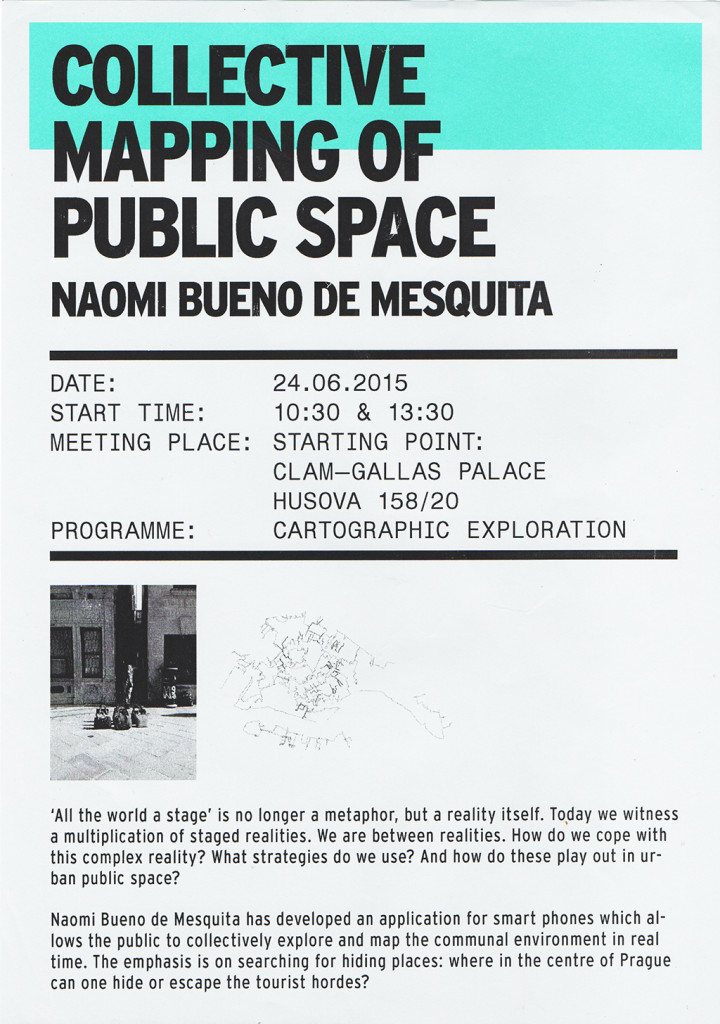
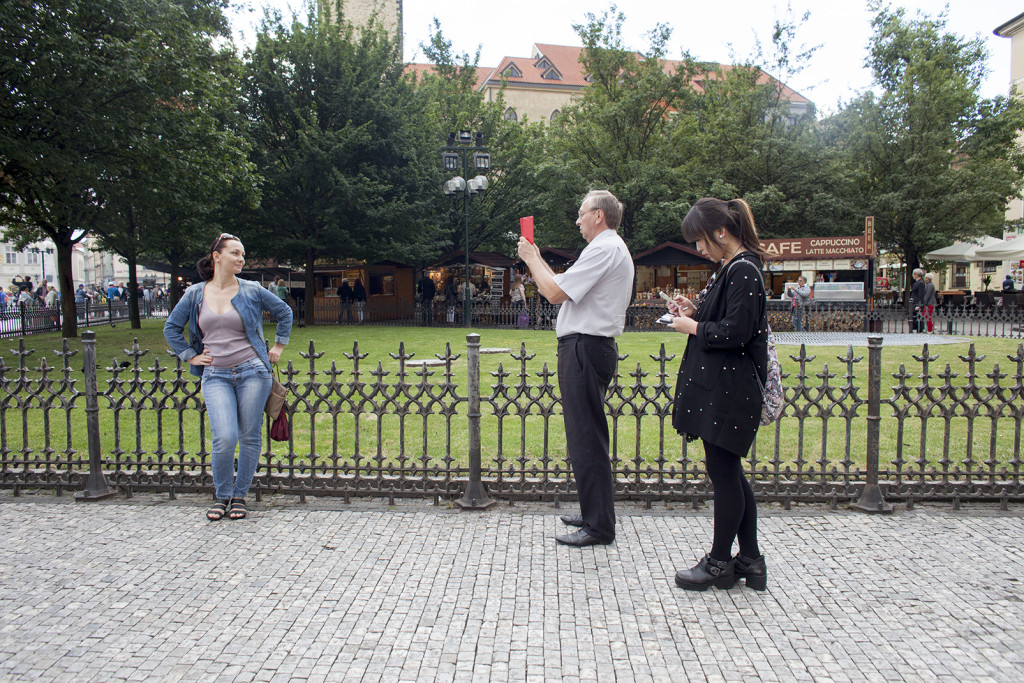


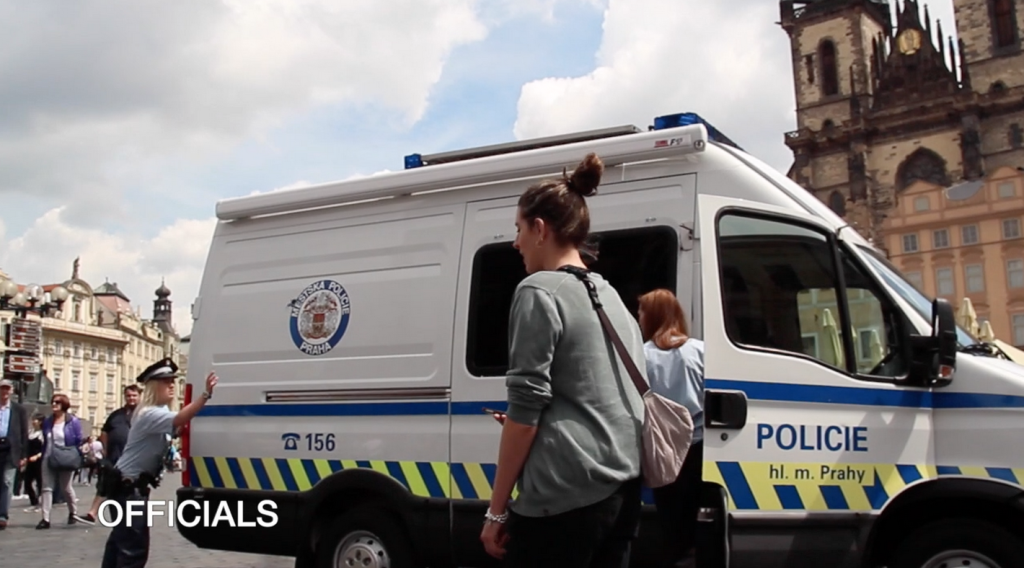

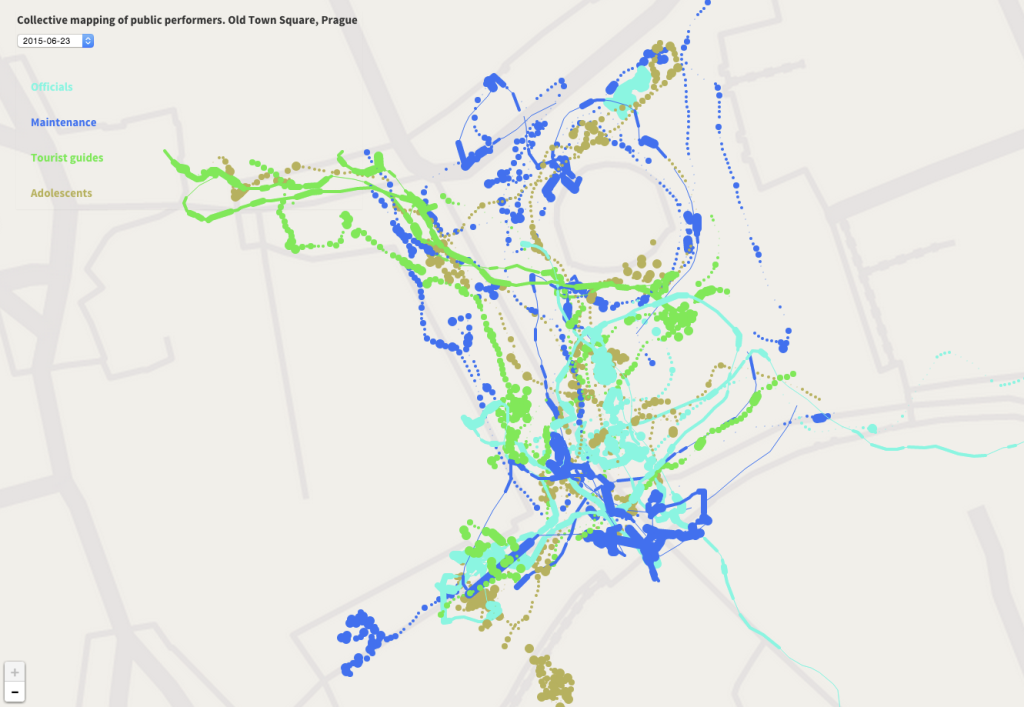
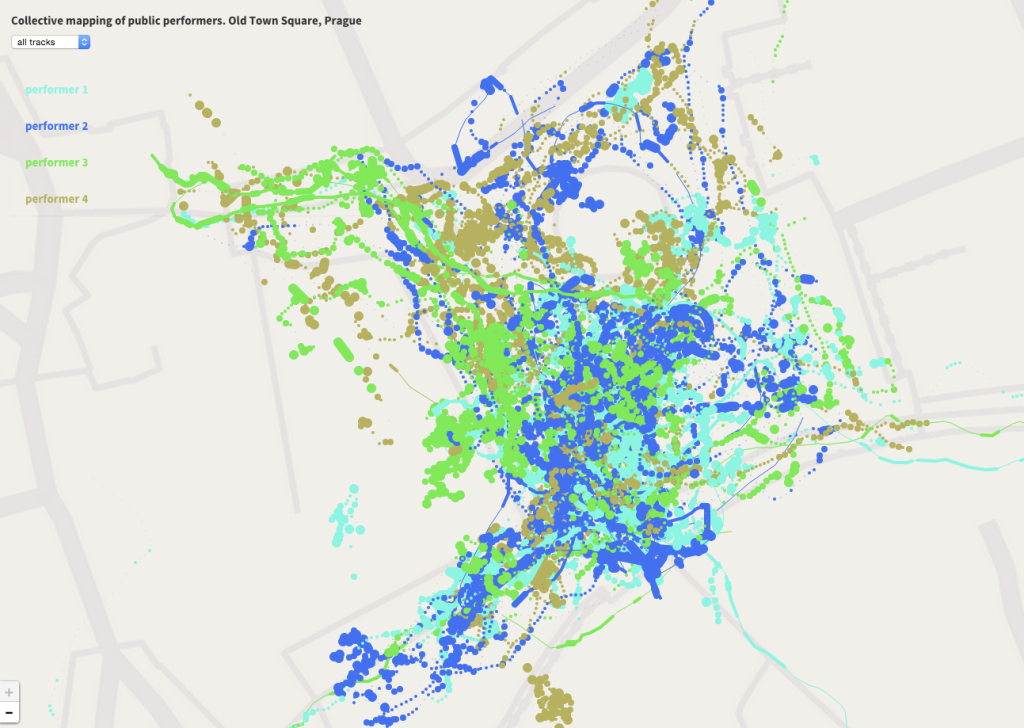
Discussion Between Realities : Collective mapping of public space